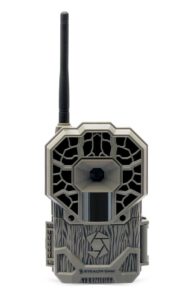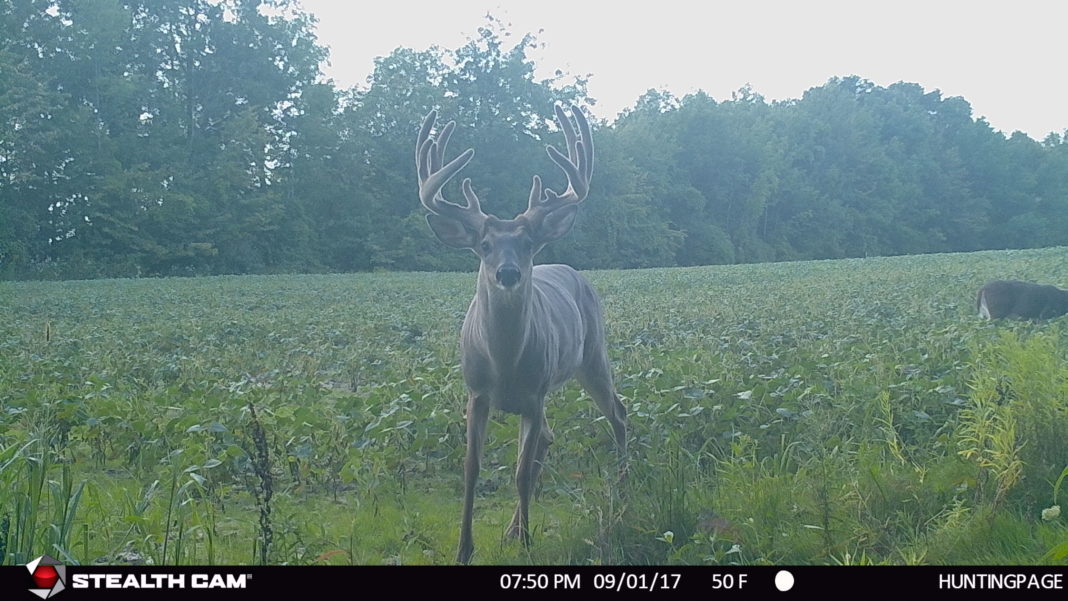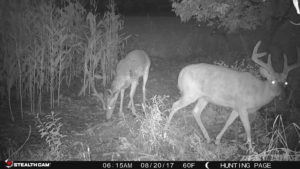As hunters begin hanging trail cameras or get one in the field for the first time, the anticipation and excitement to see what images and/or video you have captured are comparable to Christmas morning. Once you have your trail cameras set up and in the field, the burning questions we all ask ourselves are, “How often should I be checking or moving my trail cameras, and what are the best weather conditions to check them?” Unfortunately, the answer for almost all situations would be to check your trail camera as little, or as infrequently, as possible. Less intrusion will result in better pictures, will provide you with better information, and give you the best chance at taking a trophy buck this year.
Be Prepared
One of the most important steps is to ensure that your trail cameras don’t run out of storage space for pictures and video, also you should gives it ample soak time 2 to 4 weeks. To do this, you will want to buy a SD card with the largest capacity your trail cameras can handle — 16 GB or 32 GB seem to fit the bill. Second, you will want to be sure that your trail cameras don’t run out of power between you checking them. To do this, you will want to ensure that you are buying high-quality/long-lasting batteries. Lithium batteries are usually the best bet. You can also find external battery packs or solar panels to extend the amount of time your trail cameras will have power between checking. If you are someone who normally checks your trail cameras weekly, or even bi-weekly, try and hold off a little bit to see if you notice an increase in daylight movement when you do check those cameras. Here are a few tips that we utilize on our camera pulls.
- Minimize your scent. Whitetails have a sense of smell that is many more times sensitive than humans. So when you go in the woods to check your trail camera, try to remember to wear rubber boots and bring some cover scent to do your best to eliminate any human contamination you may leave in the woods.
- Checking wind direction. Making sure you pay attention to wind direction when checking your camera sets is a crucial tactic to not give away specific camera or stand sites, or more importantly, your access in and out of specific areas. Check cameras like you would hunt a tree stand, and your pictures will increase. Come hunting season, you will be hunting daylight travel patterns.
- Check your cameras on rainy/misty days. Rain naturally reduces human scent by knocking particulate in the air down to the ground, effectively eliminating much of your scent trail. When the rain washes away fresh scents from the air, it also makes new scents easier for deer to detect.
- Switch to black flash or no glow flashes. Black flash is a fancy word for no-glow flash. Typical flashes on cameras use a pulse of white light that can startle deer. Standard infrared cameras use a burst of red light to illuminate the target at night. A black flash camera uses a low glow or no glow infrared flash. All trail cameras make some amount of noise when taking a picture, so it’s imperative that they stay completely undetectable by whitetails, but it definitely does help in preventing your camera being detected by mature deer as well as unwanted trespassers.
-

Stealth Cam® ups the ante on wireless image transmission & expands its coverage with the introduction of the new WXV Verizon cellular camera. Users have complete control of their cameras via the updated FREE Stealth Cam Remote APP 3.0. Cellular trail camera advantages. You only have to visit your trail cam to set it up, change the batteries, and take it down. There is no more wondering about moving off deer by visiting your camera locations and leaving a scent. You can also easily set up your trail camera and have the information sent via text, email, or installed into a hunting app. You can remotely change the settings from your computer or phone without actually visiting the camera. You can set up your camera on different properties and know exactly what is going on, which is a huge advantage when hunting several different bucks.
Patience Has Killed More Big Bucks than Pressure
If you are able to scale it back a little bit and stay out of the whitetail woods as much as possible throughout the summer and early fall, especially the areas you hunt, you will dramatically increase your chance at promoting daylight movement from a mature buck once deer season rolls around. I know it can be hard, but there is a huge difference between getting pictures of a buck and putting him on the ground.



















![The Best Deer Camp Chili [VIDEO] Deer Chili Ingredients, Tomatoes, Chili Spices](/wp-content/uploads/2015/10/Deer-Chili-Deer-Camp-Recipe-218x150.jpg)
![How to Call Elk Early in the Season [VIDEO]](/wp-content/uploads/2016/08/byers003-218x150.jpg)





![Idiots Disturb Hunter: How Would You Have Handled It? [VIDEO]](/wp-content/uploads/2015/10/DSC00110-e1474487693878-100x70.jpg)
![Albino Buck Shocked to Shed His Antlers [VIDEO]](/wp-content/uploads/2015/10/AlbinoDeer-100x70.jpg)